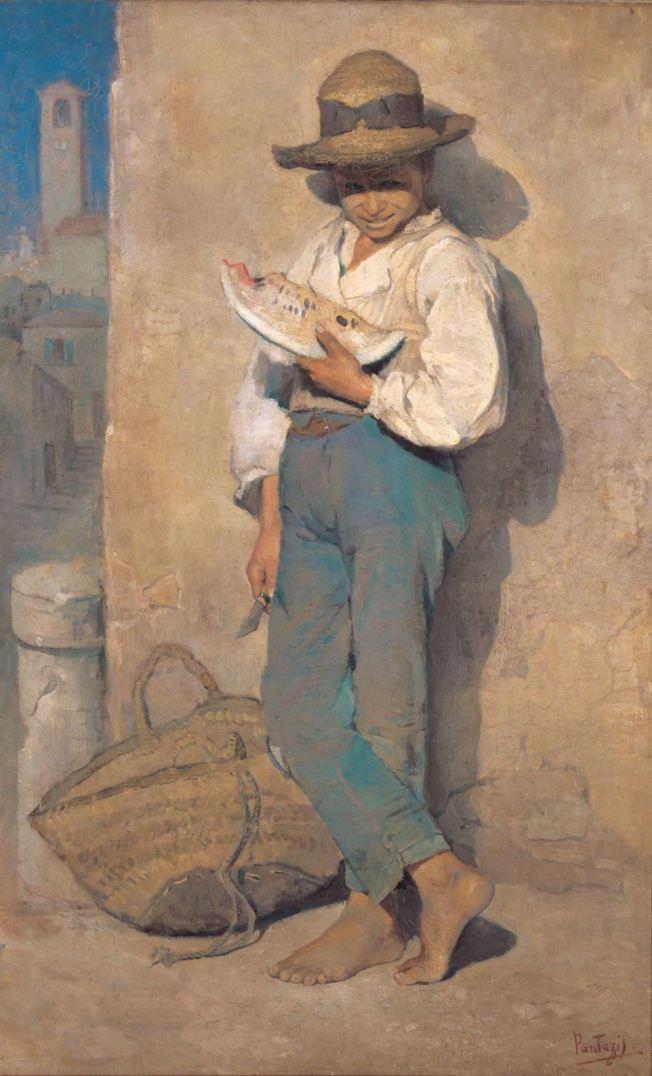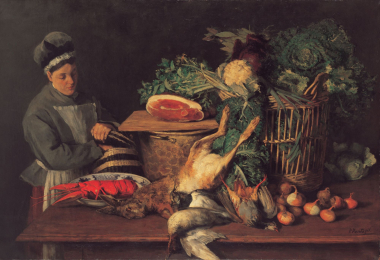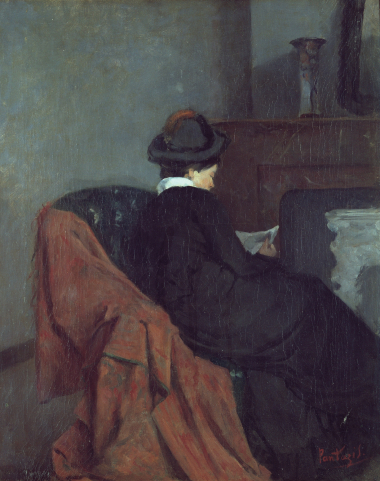Street urchin eating watermelon, 1881


As Pantazis frequently exhibited in Athens, he provided his fellow-countrymen with the opportunity of getting to know the major changes in art which were taking place at the same period in the centres of Europe. During his stay in the Greek capital from summer of 1880 to early 1881, he painted a series of works which he presented in the exhibition held for the benefit of the Red Cross in the home of V. Melas, among which was Urchin Eating a Water-Melon, which he exhibited with a title in the Katharevousa (purist) form of the language. The addition of the name of the city of Athens to this latter title and the typical topography of the Plaka district, which is clearly apparent in the alleyway with the steps of the Church of Our Lady Chrysokastriotissa in the background and the ancient column which is built into the wall on the left, leaves no doubt that the work was painted in Athens. It is a typical example of painting in which the human figure is integrated into the space. But this space is not merely the framework for the positioning of the figure or a feature indicative of the employment of the figure depicted, but a living, vibrant space in which the strong, blinding Mediterranean light acts as a catalyst, uniting the colour tones which arrive almost at a monochrome of the blue and the ochre. In this space, vibrant with light, Pantazis places the boy's figure, in the same colour harmony of cold and warm tones, and - without confining himself to an idealised depiction of the figure - lends not only features to the face, but also succeeds in endowing his cunning sidelong glance with some fleeting qualm of conscience or guilt.







